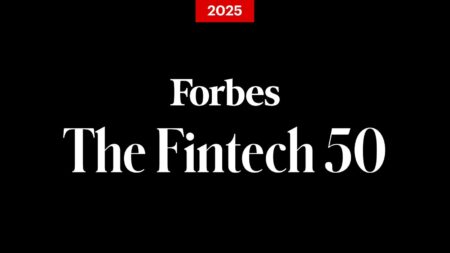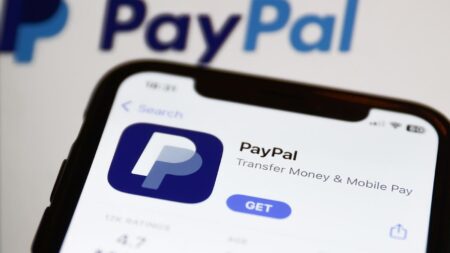Few people know more about the world of payments than Klas Bäck. Even fewer are as acutely aware of just how impactful a comprehensive payments strategy can be for a company’s bottom line. Klas joined Braintree as one of its earliest executives back in 2012 and oversaw its meteoric rise through an acquisition by PayPal (for $800 million) and into the juggernaut it is today. His secret? Focus on the entire lifecycle of a merchant’s journey – and make ‘payments’ an intentional strategy for all of the various key stakeholders across an organization.
“Payments, and certainly payments data, is central to almost everything a company does. Yet most executives and business unit leaders are flying blind in this regard. It’s almost like best case you have stale, isolated data living outside your existing pipelines, processes and dashboards” – Klas Bäck, CEO and Co-founder at Pagos
Prior to the advent of the internet, and even from the first online transaction (a Sting CD sold by US retailer NetMarket on August 11, 1994) through the launches of Amazon and eBay, a small business or department store would simply go to their corporate banking partner and buy an additional service called merchant acquiring (e.g., the ability to accept payments from your customers). But these companies born online were different and needed a new solution for commerce on the internet. And as technology (think mobile) and business models (think marketplaces) further advanced over time, these digital-first companies needed something yet even more specific – simple and flexible upfront, but also dynamic and comprehensive under the hood.
Enter Braintree and Stripe. Digitally native, API and mobile-first payments companies who saw the multi-trillion dollar opportunity ahead, both solving unique pain points and reducing friction to enable the proliferation of e-commerce. Getting started is always the hardest part so it’s not surprising that they were focused on streamlined onboarding/underwriting and integration, respectively, and that meant engaging with stakeholders other than just the person who was responsible for managing their corporate banking relationship.
Over the past 10-20 years, we’ve seen this evolve and expand to the point where ‘payments’ as a function can live under any number of orgs inside a business – from finance to operations to product to engineering to even revenue teams. However, the most cutting edge organizations are hiring or elevating a Chief Payments Officer who has their own seat at the c-suite table.
The key to success for any new Chief Payments Officer will boil down to one thing: data. With payment acceptance costs now being the second largest expense line item (behind only employee costs) for most organizations, there are both direct and indirect costs which are oftentimes blurred together and almost always one giant black box.
To address this head-on, Klas has teamed up with fellow Braintree alum Albert Drouart to build Pagos as a culmination of their vast experience and unique insights into the future of payments. Modern cloud architecture has paved the way for organizations to replicate their data-driven approach to growing and scaling their companies to payments as well but they are lacking the dashboards, insights, infrastructure, knowledge and tools to do so. Klas, Albert and the entire Pagos team hope to change that.
I recently sat down with Klas to discuss this new era of payments where almost every component of the stack is becoming composable and modular, value-added services are getting decoupled and it’s borderline negligent not to be thinking about taking back control by running a self-managed multiprocessor (have we forgotten about Silicon Valley Bank?) payments strategy that includes a wide-ranging set of tools and partners. We also covered taking ownership of tactical things every Chief Payments Officer should be considering such as making data-driven payment decisions to drive better outcomes.
Colin: Can you give us a quick State of the Union for payments in 2024?
Klas: It’s an interesting point in time because there are two concurrent trends converging that are creating chaos for merchants. First, the ways in which consumers are buying is changing. Mobile phones are becoming the primary modality, we’ve seen an explosion in the proliferation of associated wallets, social media apps and streaming services are becoming commerce platforms and everything has internet-scale reach so a merchant is now essentially global by default. This means that companies have to deal with and manage more sales channels and payment flows, often with different technology stacks and partners, than ever before. Then you couple that with the complexities associated with the unbundling and modularity of individual services and providers and you get one hell of a mess from an infrastructure perspective. Decoupling is good but it requires an intentional approach to internal centralization for managing data and actions.
Colin: Sounds daunting! How can a company get started with a payments strategy? What’s the first step?
Klas: It starts with consolidating, normalizing and cleaning all your payments data so you can start looking at all relevant details to begin drawing required insights to optimize your flows. You also need to monitor your data and metrics over time to see the trends and how you can improve all stages of the payment process, from checkout to post-transaction issues such as refunds or chargebacks. Payments data is also great because it gives you rich insight about your business, your platform, your vendors, and your customers. Don’t sleep on this data; it can tell you so much about the health of your business and how you can make it better.
Colin: What about the notion that payments is just always going to be a cost center – is that true?
Klas: No, driving revenue, reducing manual work, driving efficiencies and finding issues faster are other key drivers, as well. However, since payment data touches almost all parts of an organization, what is relevant or important is also a function of which teams we are talking about. From Product and Engineering wanting to make sure the platform (and required vendors) are as optimal and consistently performing as possible through operations, finance and revenue teams. Having said that, it is worth remembering while the industry talks about, let’s say, a failed transaction, and what could be done to avoid such a failed transaction, there is a buyer behind that failed transaction that wanted to buy and now gets frustrated and might never return. This also means that to accomplish the same sales you would basically pay twice for marketing to get a new customer through your sales funnel.
Colin: So, how do you prioritize the right things?
Klas: We find that many companies are not making data driven decisions around what they should be optimizing for here. Far too often, do they get carried away by something their vendors or the industry is talking about in general vs what has the biggest impact for them. However, only they have the detailed context around what is best for their company here. Or as an other example, because of this, sometimes companies don’t optimize 99% of their business because they are trying to solve for 1% outliers etc. Is US Debit routing worth it for you? Is Network Tokenization? If I am adding a second (or third) processor, how do I make sure I am doing better over all across ALL cost and all performance data points?
In addition, things change all the time, so monitoring and making sure you constantly hit your goals and metrics is critical while catching if anything would change. For some of those metrics that might require daily or even hourly tracking to avoid losing money and customers.
Finally, it is important to be forward thinking and plan ahead; what do the latest network rules or regulatory policies mean for your business. As an example, what could be the impact on your business based on Visa’s recent Flexible Credentials announcement.
Colin: Is there a tactical list of things a company can do to manage payments more effectively?
Klas: Absolutely. Beyond managing how you best contractually negotiate the most favorable terms and working relationship with your payments partners, which is covered extensively elsewhere, and making sure your vendor selections are capable, knowledgeable, and support both the relevant tools and you, there are many other things merchants selling or billing online can take ownership of to drive down cost. While every company may handle payments strategy a bit differently and what is relevant is a function of how they operate, there are a few tactical things a company should consider as a start.
Firstly, it’s essential to send the right data to your payment processors to receive more favorable interchange fees; meanwhile how you route your transactions, especially considering debit and cross-border routing, can significantly impact your processing costs. Additionally, managing fraud filters and approval rates is also crucial to avoid blocking legitimate customers and reducing declined transactions while managing fraud within acceptable rates for your business.
It’s also important to manage processing penalties and paying extra for not following behavioral rules. For some companies, it is also important to consider presenting and settling transactions in local currencies which can potentially lead to a need to use multiple payment processors, in order to optimize cost and revenue. Also, implementing network tokenization and account updater services can decrease fees and prevent customer churn, respectively, while a retry strategy for failed transactions can also have an impact on churn. Other vital steps include chargeback optimization, incentivizing the use of cheaper payment methods, maintaining observability in your payments process, and benchmarking against peers. Each of these strategies can help companies streamline their payments process and reduce costs.
Colin: That’s a lot! Let’s start with the data you send to your payment processors. How important is this and what kind of data should companies focus on to optimize costs?
Klas: First, making sure you send the right data to your payment processors is crucial. This includes, as an example, sending Level II/III data as relevant—by sending more data with certain transactions, you can receive more favorable interchange fees, typically in the range of 50-80bps in saving on applicable cards. It also includes managing what the industry calls downgrades, meaning the data you send or don’t send impacts your total cost for the payment transactions. We have found that downgrades can be as much as 10-20% of total Interchange for some companies that have not paid attention to this before.
Also, incentivizing moving transactions from expensive payment methods to cheaper ones can be essential. Commercial cards can be more than 1% more expensive than consumer cards. Shifting volume can have a big impact, and the same is true for card vs. ACH. Some BNPL brands (and other card brands) can drive higher basket sizes and more frequent buyers. Still, it’s important to assess if they are actually delivering these benefits or just increasing your total cost of payment acceptance.
Where and how you route your transactions also matters significantly. For example, debit routing can be important for some companies. While the Durbin amendment of 2011 set the maximum fee for debit cards to $0.21 + 0.05%, many processors will charge a blanket fee for both debit and credit transactions. Choosing processors that offer favorable terms for debit card processing can yield savings in the range of 50-100bps for US debit cards.
Colin: What penalties should companies be aware of?
Klas: Managing processing penalties is crucial. For example, excessive retries can be as high as 1% of Interchange and Scheme Fee amounts for subscription merchants. Missing zip codes on debit transactions can also result in 1% of total fees.
Colin: Should companies consider how they present and settle transactions in local currencies?
Klas: Definitely, if you are selling to international customers, start considering how you present and settle your transactions in local currencies and consider moving from a cross-border scenario to using local partners processing for your local subsidiary. While relying on your processors for cross-border payments can be very convenient, it can also drastically increase your costs by more than 4x in some markets while also driving up the number of transactions that fail. Should you take ownership of pricing and settling in local currency and manage the FX yourself, it could mean significant financial savings compared to doing it on a per-transaction level, which can drive up costs by more than 500bps or 80%.
Colin: How should companies think about managing fraud filters?
Klas: Managing your fraud filters to avoid blocking good customers is vital. If you are worried about fraudulent transactions and block good customers as a result, you’ll need to replace those good customers through your sales funnel, which involves related marketing costs.
For the same reason, managing your approval rates is crucial. Depending on the situation, companies see between 5-80% declined card transactions, and typically half of those are addressable by the merchant. This is impacted by factors such as currency, your location, how you are classified and configured, and whether you and your vendors are in compliance with the latest rules and policies.
Colin: You mentioned using multiple payment processors. What are some of the benefits?
Klas: Different payment processors have different performance in different situations. Consider a multi-payment processor strategy to best optimize your cost and revenue. If you choose to vault your payments in a secure third-party token vault, you’ll have even more control over your processing strategy.
Retry strategies for failed transactions is one additional place that a multi-payment processor strategy can have an impact. A failed transaction can sometimes be successful if you try it later or differently and adopting a retry strategy can have a material impact on your cost and customer churn.
Also, there are several advantages of centralizing the vault in a multi-payment processor strategy instead of having one vault with a single processor or multiple vaults with several processors. One area is using network tokenization for your recurring or cards-on-file transactions, which can decrease interchange fees by about 5 to 10 bps. Taking control of account updater services is another area for finding efficiencies. In the US alone, 40% of cards get reissued each year. If you need to ask your consumer to re-enter their payment credentials—especially for subscription services and billing—not everyone will do it. This churn is very costly to reduce since it means replacing those who leave with new customers via marketing efforts that can be costly. By subscribing to an updater service, you will get access to many of these updates without having to ask your customers.
Colin: Can chargeback optimization make a difference?
Klas: Good point. Disputing and managing chargebacks more effectively can have a very material cost impact on lost sales, fees ($2-$25/item), and penalties, as well as the cost of disputing. Make sure you identify winnable chargebacks and address them all—or hold your vendor accountable for the success if you have outsourced it.
Colin: How important are observability and benchmarking in the payments process?
Klas: Observability is critical because unintended (technical) changes happen all the time in parts of your infrastructure and with vendors. It’s crucial to know when this happens and address it as soon as possible to avoid revenue leakage and increased costs. Equally important is benchmarking. You may have done everything you can think of to optimize your payments stack, but knowing how your peers are performing can be a critical signal that you could be doing more with/for less.
Huge thanks to Klas for all the great information and tips – and I can confidently say we are just scratching the surface! With everything going on in the world today, recent events from the past couple of weeks included, and an accelerated shift towards individual payments stacks looking more like distributed systems it’s going to be paramount for businesses to think about control and resiliency. I think Klas would agree that It’s All About the Data, Baby!
Read the full article here
















